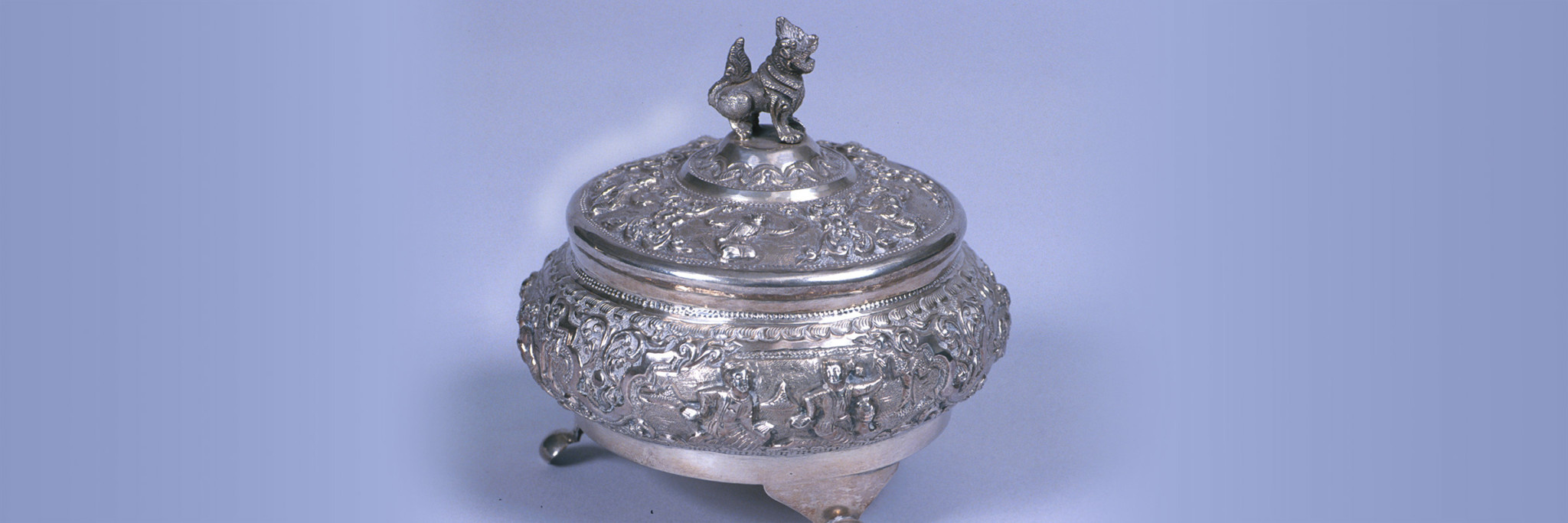This spring Sherry Harlacher left her position as assistant professor in the Department of Visual Arts at McNeese State University in Louisiana to take the helm at the Denison Museum. A couple of things you should know about her: She’s a bit of a specialist when it comes to Asian art (a bonus considering the museum’s extensive Burmese art collection), you can’t pin her down on a favorite piece, and she can probably beat you in a dance-off.
What part of Denison’s collections are you most excited about?
My expertise lies in Buddhist art of Asia, so I’m excited about taking a closer look at that material. But I’m also interested in the Chinese rubbings and American and European engravings and etchings housed at Denison.
What’s the most interesting piece you’ve ever studied?
One of the first pieces I studied belongs to Phoenix Art Museum, where I volunteered as a docent and later worked as the curatorial assistant for Asian art. It was a small stone sculpture made by Indian craftsmen in the 12th century. It was commissioned for use by Tibetan monks who had traveled to India to study at a Buddhist monastery. I was able to collaborate with a Tibetan monk who helped us identify and catalog other Tibetan objects in the permanent collection.
This sugar bowl, which the Burmese had “westernized” to appeal to the missionaries who bought their goods, is just one of thousands of pieces Harlacher will get to study during her Denison career.
What’s one lesson you’re bringing with you?
You can’t do it all alone.
What’s one piece you’d really like to see on exhibit at the Denison Museum?
If you mean an object from the permanent collection, I still have a lot of homework to do. I want to see every- thing and know the exhibition history of each item as well as what kind of condition the pieces are in. I am also very interested in bringing a few traveling exhibitions to Denison, including a show of some of the big names in American metal engraving and the work of a contemporary Chinese painter named Lee Chun-yi.
Favorite museum in the world?
Another tough one. I really enjoyed the Victoria and Albert Museum in London and the British Library as well as the National Museum of Denmark in Copenhagen. There’s a great replica of a Victorian dining room at the V&A with all of these various pieces of flatware at each place setting. I also visited the Han Yang Ling Museum in Xian, where the tomb of a second-century BCE emperor is being excavated. There are indoor glass walkways that allow you to walk out and peer down into the various chambers that have been excavated.
Favorite work of art?
Don’t have one.
Favorite artist—dead or alive?
I love portraiture. However, I tend to be most curious about objects that were made by anonymous craftsmen, like ceramics and ritual objects.
If you weren’t a museum director, what would you be?
When I was in junior high and high school, I thought I might be an archaeologist or a linguist. In college, I was leaning toward a career as a diplomat in the foreign service. All my career interests have some connection with encouraging a greater appreciation for cultural diversity and how knowledge of difference enriches our lives.
What’s the one misunderstanding about museums you’d like to dispel?
Some people believe that visiting an art museum is only worthwhile if all you plan to do is admire what some- one else has decided is a masterpiece.
Tell us something about yourself that might surprise us.
When I was a sophomore in college, I was invited to join a local modern dance company in Los Angeles. I was majoring in French at the time and taking dance classes on the side. I often wonder how things would have turned out if I had said yes.

